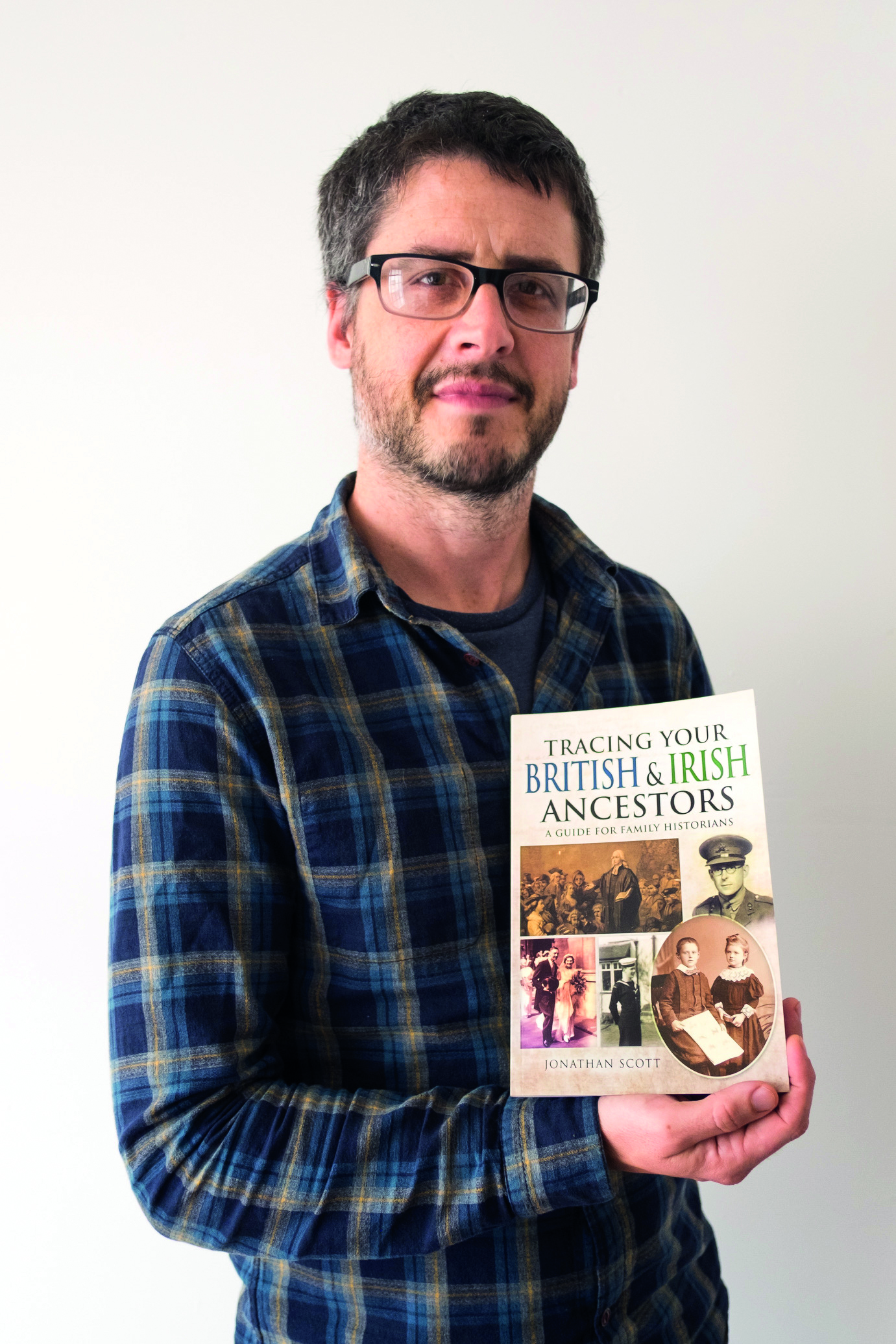At the time when Jodie Whittaker's ancestors were running their mines, the industry employed about 1.2 million people in the UK.
Many of the websites featured this month can help you find out more about the wider state of the industry – from the coalfields of Cumbria, Northumberland and Durham, North and South Wales, Lancashire, Yorkshire or the Scottish Central Belt – to individual pits, and from the generation of Bevin Boys who were conscripted to increase production during the Second World War, through to the industry’s rapid decline from the 1970s.
While the popular fascination with Britain’s industrial heritage, and the lives of miners in particular, means there’s a great deal of social history and technical information on tap, actual records of a miner’s employment may be harder to come by.
It’s best to start by location – focusing on region, then company, then pit. You may already have this information to hand if you’ve located your ancestor in the census. And if you are struggling to find records of employees, try records of associations and trade unions, or social and sports clubs.
These websites are a good place to start researching British coal miners. Good luck!
1. National Coal Mining Museum For England
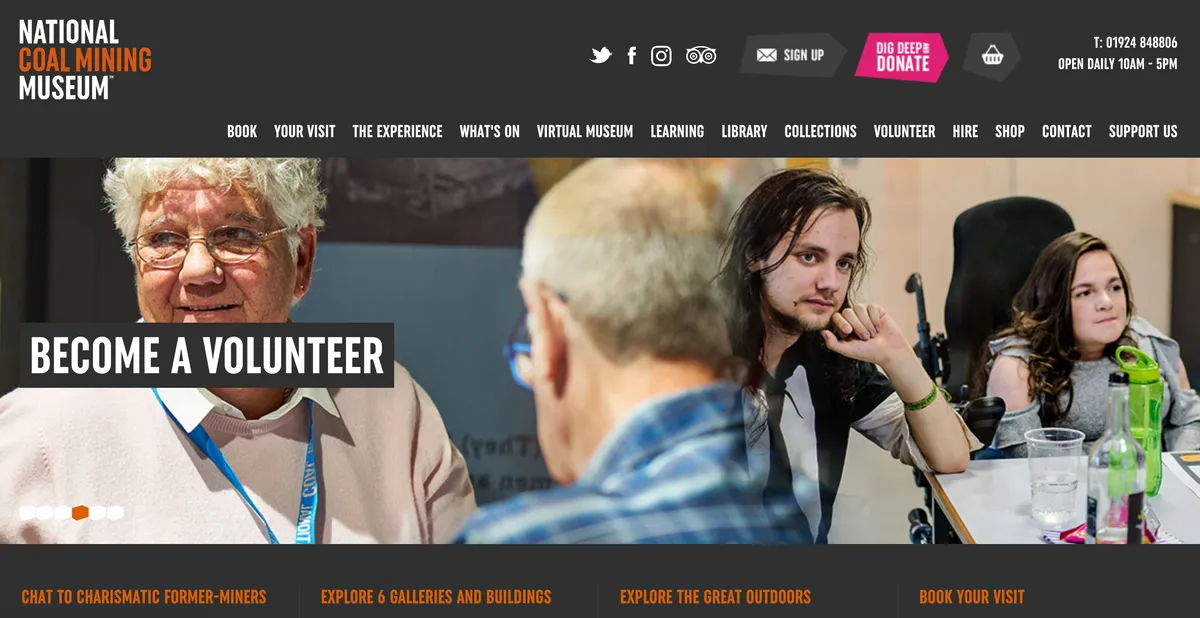
During her episode, Jodie Whittaker visited the National Coal Mining Museum in Wakefield and met former miner and tour guide Pete Wordsworth. You can explore the National Coal Mining Museum’s holdings on its website, where you can read about the kinds of machinery that your ancestor might have used, and the section ‘Lives and Voices’, which describes the museum’s social history collections. They include material relating to trade unions, pit management, health and safety, disasters and an oral history collection.
There’s also an online catalogue that includes some images and interesting artefacts. Just one example is An Open Letter to the Hemsworth Miners From a Mate, a poem on the value of the union, written during a strike in Hemsworth, Yorkshire, in 1901.
2. Northern Mine Research Society
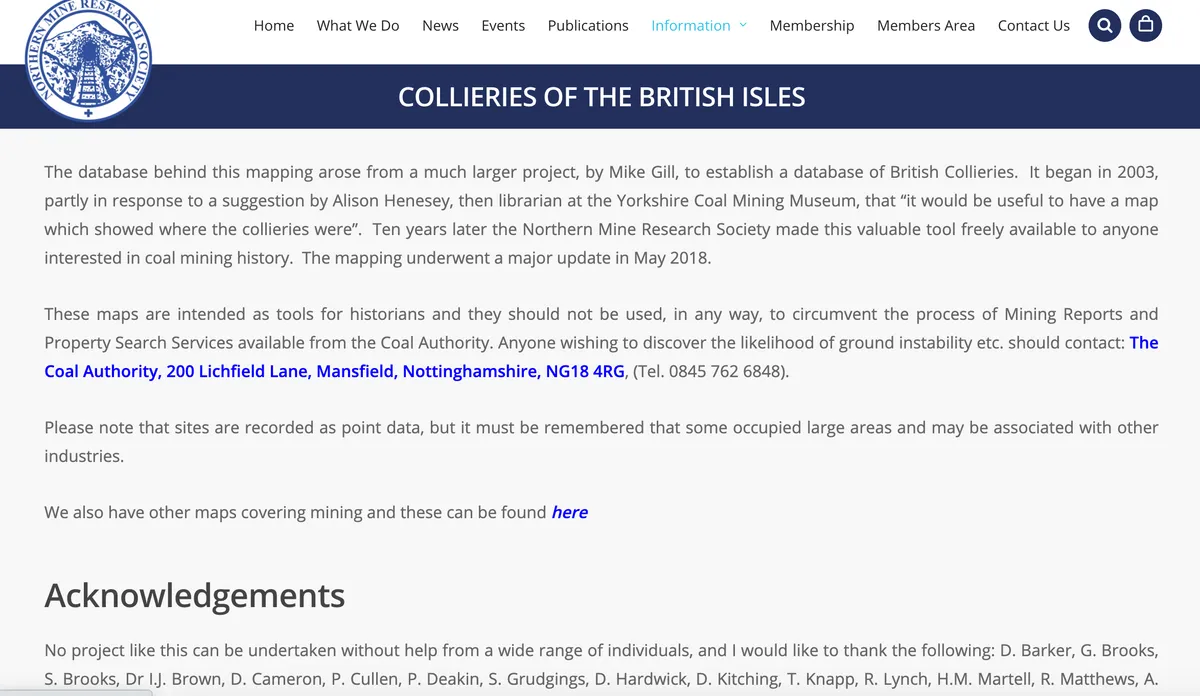
This busy society has produced a wide variety of publications and projects over the years and recently updated its Collieries of the British Isles database. This was a mapping project that began in 2003, partly in response to a suggestion by Alison Henesey, then librarian at the National Coal Mining Museum for England. The results can now be displayed using Google Maps – simply click on a map to open it. This particular URL details the scope of the original project, who undertook the work and the various sources that were used. Although not the easiest site to use, it does mark on the map the collieries owned by Jodie Whittaker's relatives, the Auckland brothers.
3. Healey Hero (previously The Coal Mining History Resource Centre)
For many years Ian Winstanley's Coal Mining History Resource Centre was the go-to website for coal mining research. Luckily, when it closed at the end of 2019, the Healey Hero website came to the rescue. Although the website looks fairly basic it actually contains a wealth of useful information including research guidance, old maps, a list of mines, a glossary of mining terms, and a database of more than 164,000 recorded accidents and deaths. This database is also now freely available on Ancestry.
Before 1850 there was no systematic recording of mining deaths, so all of the pre-1850 names were collated by the site’s creator – former miner and teacher Ian Winstanley – during 10 years of research, often drawn from articles in newspapers and other periodicals.
After 1850 the main source is official Mines Inspectors’ Reports, which surveyed deaths and injuries in coal, oil shale and metal mines/quarries.
4. The Scottish Mining Website
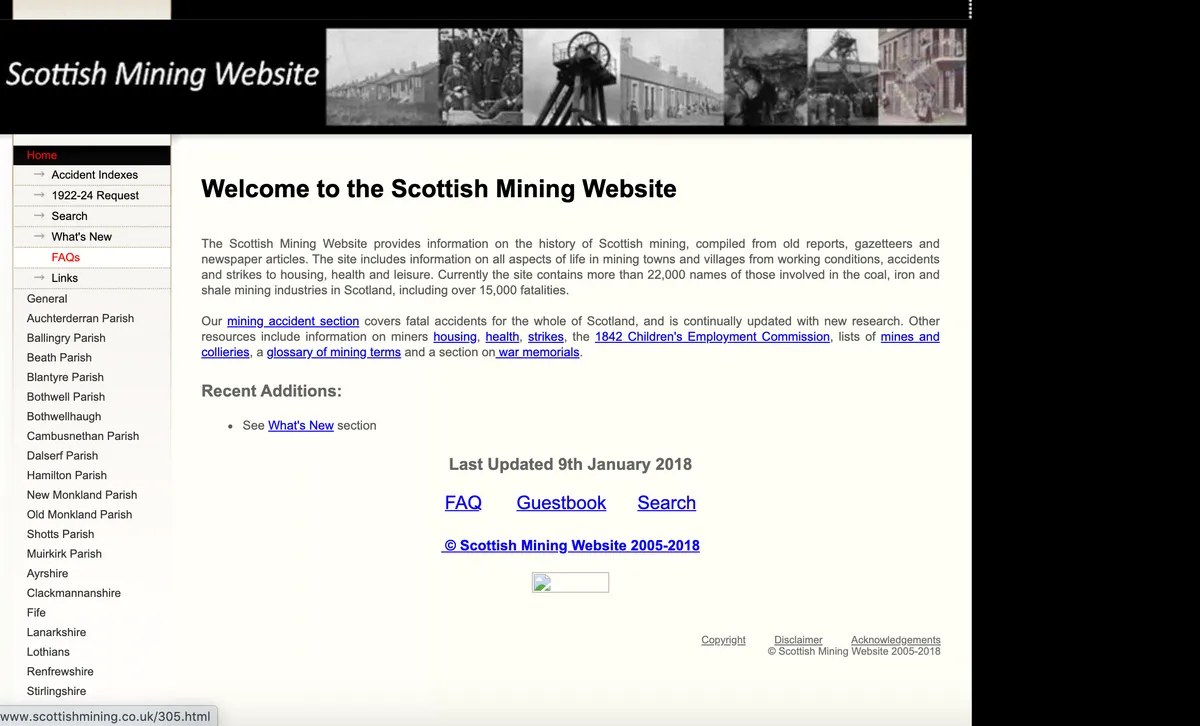
Although this website only receives infrequent updates, and the design is dated, it remains a valuable resource, with photographs and information organised by region/parish and drawn from reports, gazetteers and newspaper articles.
The Scottish Mining Website reveals not only working conditions, but also community life in the mining towns and villages, including housing, health and leisure. There are currently more than 22,000 names of individuals involved in coal, iron and shale mining in Scotland, including over 15,000 fatalities from accidents. There are also lists of mines and collieries, a glossary of mining terms, and a section on war memorials.

This utilitarian guide to Coal Authority records details what official coal-mining data is available for researchers, how to access undigitised coal-mining records, costs and charges, as well as how to request further information.
You can find out more about a collection of abandonment plans covering open-cast and deep-mining operations, and the British Coal photographic collection. The images come from a wide range of collieries and cover every aspect of coal mining. These have all been scanned, and are searchable and available to view at the Mining Heritage Centre in Mansfield.
6. Expert's choice: Durham Mining Museum
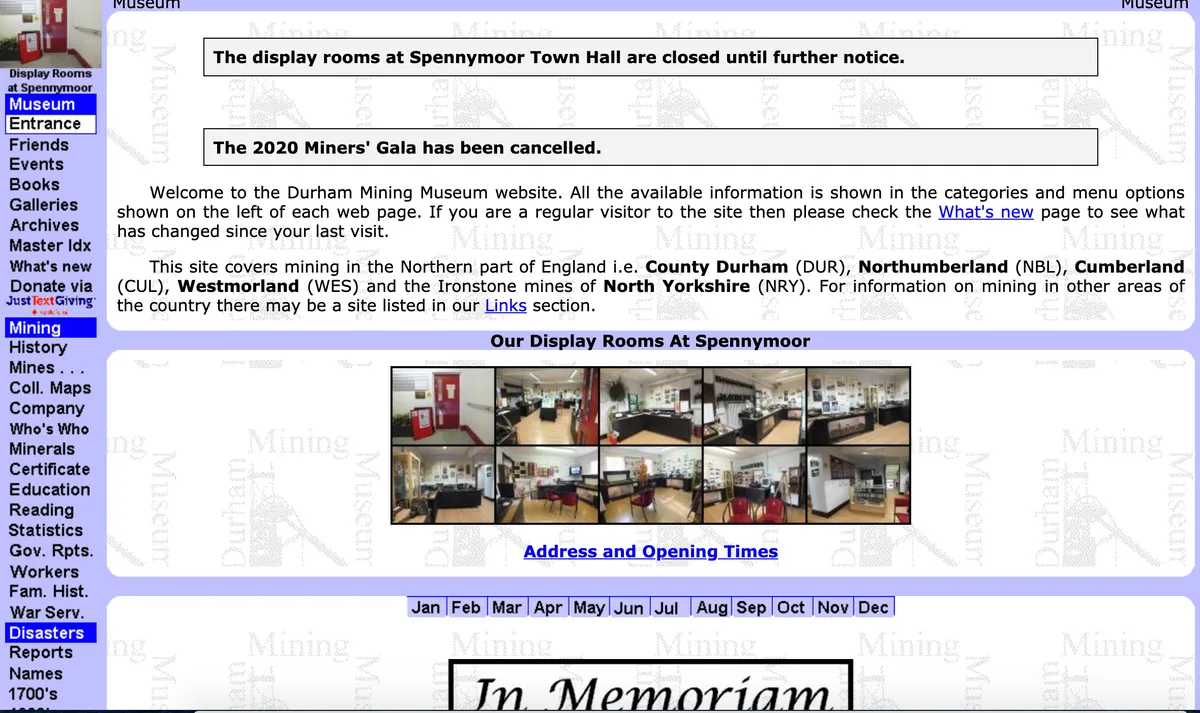
Chosen by Brian Elliott, author of Tracing Your Coalmining Ancestors:
"The volunteer-run Durham Mining Museum website remains one of the best online regional sources if you have northern ancestors who were coal miners. The site is also well worth visiting if you’ve got mining ancestors that were not from its designated areas of County Durham, Northumberland and Cumbria. The theme-related links are relevant for other coalfield regions and subjects, making it a superb one-stop (and free) source, and there is easy access to former miner Bill Riley’s excellent website Pitwork.
"A wealth of well-presented, accessible information is provided via a comprehensive menu arranged under three main headings: ‘Museum’, ‘Mining’ and ‘Disasters’. The subheads under each main heading are displayed vertically in a list that remains in place on the left-hand side of the pages.
"The ‘Disasters’ section is a wonderfully detailed source as individual names of known fatalities can be searched via an ‘In Memoriam’ A-to-Z facility. To get context, you can access from the archive colliery names, official reports and coroner’s inquest reports alongside newspaper and journal information. The disaster memorials and indexed gallantry awards section is a thoughtful inclusion.
"The ‘Mining’ section is also superbly presented. Just look, for example, at the colliery maps and the indexed workers sections; and I would also pay tribute to the inclusion of the ‘War Service’ subhead, which is name-indexed as well.
"Do visit this excellent website which continues to evolve thanks to the countless hours of meticulous research by its supporters over many years."
Go further
The association commemorates the role of about 48,000 Bevin Boys who were conscripted to help boost coal production at a time of national crisis.
8. Big Pit National Coal Museum
Find out about this Welsh museum, and explore its catalogue of artefacts and collections.
This website describes life in the South Wales Coalfield during the 19th and 20th centuries.
Search The National Archives’ catalogue to find material in countless depositories. It also has a dedicated mining research guide.
Learn about Fife’s collieries, pits and mines.
12. Glamorgan's Blood: Dark Arteries, Old Veins
Online content from an exhibition about South Wales' mining heritage.
13. Mining Durham’s Hidden Depths
Search a database of names produced by a volunteer project to index records in the Durham Miners’ Association trade union archive.
14. National Association of Mining History Organisations
Find details of member groups all over the UK.
15. National Mining Museum Scotland
Learn more details about the museum library’s collection, and download a free research guide.
16. National Union of Mineworkers
Based in Barnsley, this is where Jodie Whittaker met Prof Keith Gildart. The website doesn't hold much in the way of personal information but it will help you uncover the history of the trade union.
Jonathan Scott is a freelance writer and family history expert. You can visit his website or follow him on Twitter.
